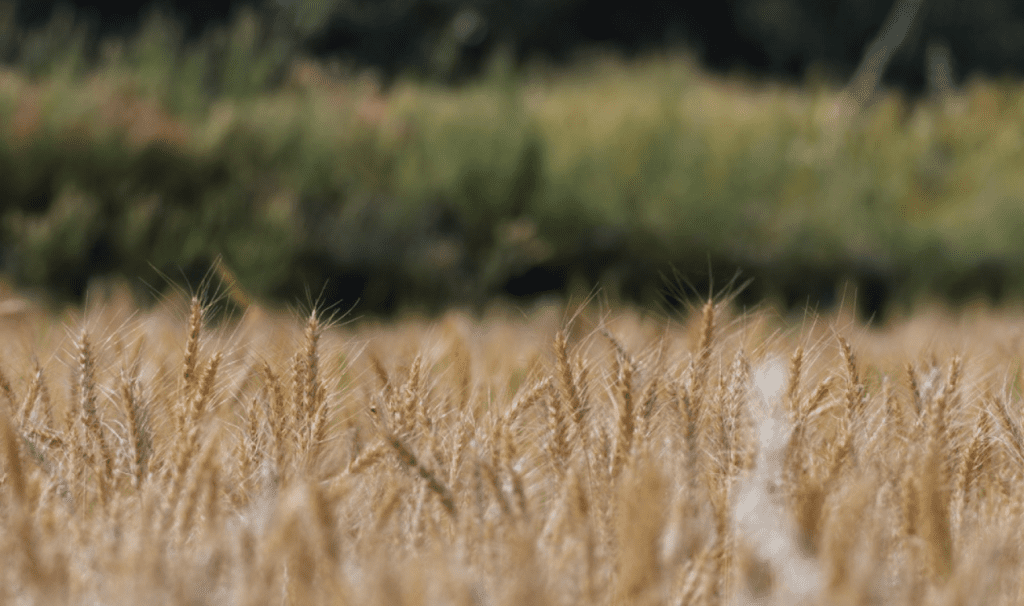Introduction: A Vibrant Mosaic of Naga Culture
The Hornbill Festival, often dubbed the “Festival of Festivals,” is Nagaland’s grandest cultural extravaganza, showcasing the rich heritage of its 17 major Naga tribes. Held annually from December 1 to 10 at the Naga Heritage Village, Kisama, near Kohima, this 10-day event is a dazzling celebration of tribal traditions, unity, and Northeast India’s vibrant diversity. Named after the majestic hornbill bird, revered in Naga folklore, the festival blends ancient customs with modern festivity, attracting thousands of locals, tourists, and global culture enthusiasts. From mesmerizing war dances to soulful folk music, the Hornbill Festival is a living testament to Nagaland’s indomitable spirit. This article explores the festival’s history, cultural performances, culinary delights, and modern significance, offering a vivid journey into the heart of Naga heritage.
Historical Roots: A Celebration of Naga Identity
Origins in Tribal Traditions
The Hornbill Festival, launched in 2000 by the Nagaland government, draws inspiration from the ancient tribal festivals of the Naga people, who have inhabited the region for centuries. Each tribe, from the Angami to the Zeliang, historically celebrated its own festivals, such as Sekrenyi, Ngada, and Moatsu, tied to agriculture, harvest, and community bonding. The Hornbill Festival unifies these diverse celebrations under one platform, preserving tribal customs while fostering intertribal harmony. Named after the hornbill, a bird symbolizing strength and fidelity in Naga folklore, the festival reflects the tribes’ deep connection to nature and their warrior ethos.
A Platform for Unity and Tourism
Conceived to promote Nagaland’s cultural heritage and boost tourism, the Hornbill Festival has grown into a global phenomenon. Organized by the Nagaland State Tourism and Art & Culture Departments, it transforms Kisama into a cultural hub, showcasing the state’s 17 tribes and their unique traditions. The festival’s timing in early December, amidst Nagaland’s misty hills, aligns with the post-harvest season, echoing the tribes’ agrarian roots. Over the years, it has become a symbol of Naga pride, drawing parallels with other indigenous festivals like Brazil’s Carnival or Scotland’s Highland Games.
Cultural Performances: A Showcase of Tribal Splendor
War Dances and Folk Songs
The Hornbill Festival is renowned for its electrifying war dances, performed by tribes like the Ao, Konyak, and Sumi. Dancers, adorned in traditional warrior attire with feathered headdresses, hornbill feathers, and beadwork, reenact battle movements with spears and daos (machetes). The rhythmic stomping, accompanied by log drums and bamboo trumpets, creates a visceral energy. Folk songs, sung in tribal dialects, narrate tales of valor, love, and harvest, with groups like the Chakhesang singers captivating audiences with their haunting melodies. These performances, rooted in centuries-old traditions, are both a cultural archive and a visual spectacle.
Morungs and Tribal Exhibits
Each Naga tribe sets up a morung (traditional dormitory) at Kisama, replicating their ancestral architecture. These bamboo-and-thatch structures serve as cultural hubs, where elders share oral histories, artisans display crafts, and youth perform rituals. Visitors can witness live demonstrations of weaving, woodcarving, and basket-making, alongside exhibits of tribal weaponry and jewelry. The morungs, such as the Konyak’s headhunter-themed pavilion, offer an immersive glimpse into Naga life, fostering cross-cultural understanding.
Indigenous Games and Competitions
The festival features traditional games like bamboo stilt races, king chili-eating contests (using the fiery Bhut Jolokia), and Naga wrestling, showcasing physical prowess and tribal camaraderie. The Hornbill International Rock Contest and Motorcycle Rally add a modern twist, drawing youth and adventure enthusiasts. These events, blending tradition with contemporary flair, ensure the festival appeals to all ages, making Kisama a vibrant cultural playground.
Traditional Attire: A Tapestry of Tribal Artistry
Warrior Finery and Ornaments
Naga attire during the Hornbill Festival is a visual feast, reflecting each tribe’s distinct identity. Men wear shawls like the Angami’s black-and-red Tsudon or the Ao’s blue Rongsu, paired with hornbill feather headdresses and boar-tusk necklaces. Women don colorful skirts, beaded belts, and shawls, such as the Zeliang’s vibrant Mekhela, accessorized with shell and coral jewelry. The Konyak warriors, once headhunters, sport facial tattoos and cane helmets, evoking their fierce legacy. These handmade garments, woven by tribal women, showcase Nagaland’s textile heritage and cultural pride.
Preserving Craftsmanship
The festival provides a platform for artisans to display their weaving and beadwork, passed down through generations. Initiatives like the Hornbill Craft Bazaar encourage young Nagas to learn these skills, ensuring their survival amidst modernization. Visitors can purchase shawls, baskets, and jewelry, supporting local economies and preserving Naga craftsmanship for future generations.
Culinary Delights: Savoring Naga Flavors
The Hornbill Festival is a culinary adventure, with food stalls offering authentic Naga cuisine. Dishes like smoked pork with bamboo shoots, axone (fermented soybean) curry, and galho (rice-vegetable stew) highlight the tribes’ bold, smoky flavors. Vegetarian options include anishi (fermented yam leaves) and boiled greens with ginger. Local brews like zutho (rice beer) and raksi (millet liquor) add a festive kick. The king chili, one of the world’s hottest, features in chutneys, daring visitors to test their spice tolerance. These communal meals, served in bamboo plates, foster a sense of shared joy, blending tradition with gastronomic exploration.
The Setting: Kisama’s Cultural Haven
Naga Heritage Village, Kisama
The Naga Heritage Village at Kisama, 12 km from Kohima, is the festival’s permanent venue, designed to replicate a traditional Naga hamlet. Surrounded by rolling hills and mist-covered valleys, the site features morungs, an amphitheater, and open-air stages. The serene yet vibrant setting, with log drum houses and stone pathways, enhances the festival’s authenticity. Nightly events under starlit skies, including music concerts and bonfires, create an enchanting ambiance, making Kisama a cultural pilgrimage site.
Accessibility and Visitor Tips
Kisama is accessible via NH-2 from Dimapur (70 km) or Kohima, with Dibrugarh Airport (220 km) as the nearest air link. Visitors can reach Kohima by train to Dimapur or bus from Guwahati. Entry to the festival is free, though premium events like the rock contest may require tickets (₹200–₹500). Travelers are advised to book accommodations in Kohima or homestays in Khonoma village early, wear warm clothing for December’s chill, and respect Naga customs, such as seeking permission before photographing rituals. The festival’s eco-friendly ethos encourages minimal plastic use, aligning with Nagaland’s sustainable tourism goals.
Modern Significance: A Global Cultural Beacon
Tourism and Global Reach
The Hornbill Festival has become a global draw, with the 2024 edition (December 1–10) attracting over 200,000 visitors, including tourists from Japan, the UK, and Australia. Supported by the Nagaland government and UNESCO, it promotes Northeast India as a cultural hotspot. Social media amplifies its allure, with hashtags like #HornbillFestival trending during the event. International performers, such as Korean bands in 2023, add a global dimension, fostering cultural exchange while spotlighting Naga traditions.
Preserving Heritage Amid Modernity
The festival plays a vital role in preserving Naga culture, encouraging youth to embrace their roots through dance, craft, and storytelling. Initiatives like the Hornbill Literature Festival and PhotoFest engage younger audiences, blending tradition with contemporary platforms. Despite challenges like urbanization and Christian influence (Nagaland is 90% Christian), the festival retains its animistic and tribal essence, with tribes like the Konyak and Chang showcasing pre-Christian rituals. Community-led efforts ensure sustainable practices, such as waste management and local sourcing, keeping the festival vibrant yet authentic.
Hornbill in Context: A Unique Tribal Celebration
A Northeast Indian Gem
The Hornbill Festival shares parallels with other Northeast festivals like Manipur’s Sangai Festival and Meghalaya’s Wangala, all celebrating indigenous heritage. However, its scale, uniting 17 tribes under one banner, and its focus on intertribal harmony make it unique. Unlike single-tribe festivals like the Ao’s Moatsu, Hornbill’s diversity mirrors Nagaland’s multicultural ethos, earning it the title “Festival of Festivals.”
A Celebration of Unity and Resilience
The festival’s emphasis on unity reflects Nagaland’s journey from conflict to peace, showcasing the Naga’s resilience and pride. Its blend of ancient war dances with modern rock concerts symbolizes a bridge between past and present, appealing to global audiences while honoring tribal roots. The hornbill’s symbolism—strength and fidelity—resonates universally, making the festival a celebration of human spirit and cultural diversity.
Conclusion: A Timeless Naga Legacy
The Hornbill Festival is a radiant celebration of Nagaland’s soul, where ancient traditions and modern festivity converge amidst the misty hills of Kisama. From the thunderous war dances to the soulful folk songs, every performance pulses with pride and heritage. As tribes gather in their morungs, sharing zutho and stories, the festival weaves a tapestry of unity, resilience, and joy. Whether you’re a cultural explorer, a music enthusiast, or a traveler seeking authenticity, Hornbill offers an unforgettable immersion into Naga life. As the log drums fade and the hornbill feathers glisten under the winter sun, the festival leaves a timeless message: to honor the past, embrace diversity, and celebrate the vibrant spirit of humanity.



